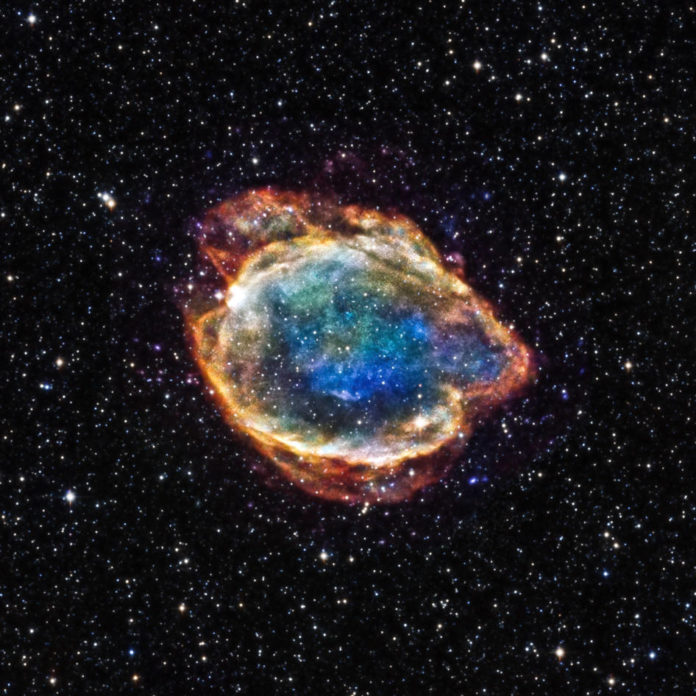What was believed to be the largest supernova ever observed is probably a star being ripped apart by a black hole, say researchers.
Last year, astronomers spotted the ‘supernova’, which was the brightest they had ever seen, classified it as super luminous supernova and named it ASASSN-15lh. Supernovas are explosions that happen as a star dies. It occurs either when the white dwarf (a star at the end of its life) accumulates too much matter from another star, or when the mass of a single star begins to flow back into its core.
ASASSN-15lh is believed to have happened about 3.5 years ago, the light of which is reaching Earth only now. It is said to be nearly twice as luminous as any other supernova, and at one point the light was 20 times more intense than that of all the stars in the Milky Way combined. The brilliance of the light caused scientists to suspect that the exploding star was a dense, collapsed star called a magnetar, reported The Verge.
However, follow up observations of the event through the Hubble Space Telescope and through various other telescopes at the European Southern Observatory have caused scientists to change their opinions. They now believe that the ASASSN-15lh is actually the luminosity from a smaller star being ripped apart by a supermassive black hole, known as a Kerr black hole.
One of the factors suggesting that the ASASSN-15lh was in fact not a supernova was the fact that it took pace in a large, reddish galaxy, “a location where we should not find super-luminous supernovae,” lead study author Giorgos Leloudas told Space.com. He is an astrophysicist at the Weizmann Institute of Science in Rehovot, Israel, and the Dark Cosmology Centre in Denmark.
Besides the unlikely location, follow-up observations of the event that lasted 10 months also revealed temperatures that do not indicate an exploding star. Rather than cooling down, the temperatures picked up, and stayed constant.
Also, the event is occurring at the centre of the galaxy, which is generally where black holes are found.
Scientists theorise that the phenomenon being observed is actually a tidal disruption event. It occurs when a star gets too close to a black hole, and gets sucked in. The gravitational pull in the black hole stretches it, and shreds it up.
However, this theory too is not a fixed one. To date, astronomers have witnessed only ten tidal disruption events. “Even with all the collected data we cannot say with 100 percent certainty that the ASASSN-15lh event was a tidal disruption event. But it is by far the most likely explanation,” Leloudas said in a statement.




























